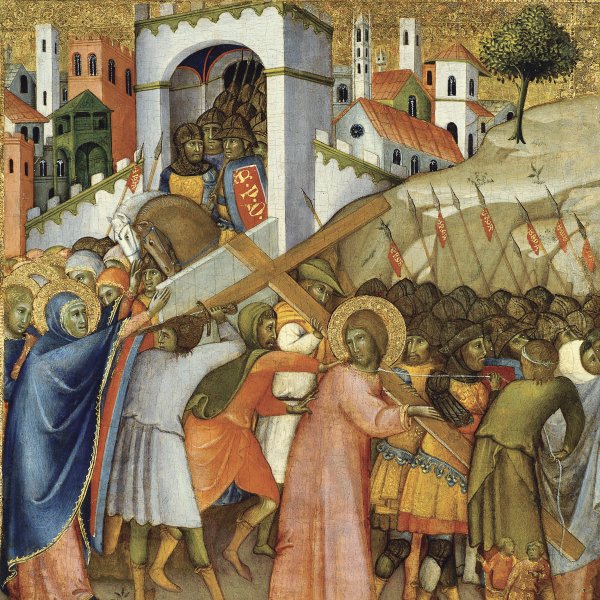Andrea di Bartolo
Siena, 1358/64-1428
A painter and illuminator, Andrea di Bartolo is first documented in 1389 in the Breve dell’Arte de’pittori senesi. He began his training in the studio of his father, Bartolo di Fredi Cini. His first documented work is an altarpiece for the chapel of the Universitá dei Calzolai in the Duomo in Siena, executed in collaboration with his father and Luca di Tommè. During the 1380s Andrea di Bartolo worked in his father’s workshop, where he was noted for his skills in painting small-format works. One example of this type is the panel of The Massacre of the Innocents (Walters Art Gallery, Baltimore) from the Presentation in the Temple Altarpiece, painted for the church of San Agostino in San Gimignano. It would seem that after 1390 Andrea di Bartolo worked as an independent painter and from this period dates the signed Annunciation Triptych (Buonconvento, Museo d’Arte Sacra, Val d’Arbia). Having established himself as an independent painter, Andrea di Bartolo became one of the most successful artists in Siena. He also executed frescoes, now lost, for the chapel of San Vittore in the Duomo in Siena, as well as carved wood sculptures and designs for stained glass. Andrea di Bartolo’s only dated works are the four panels of 1413 of Saint John the Baptist, Saint Francis, Saint Peter and Saint John the Evangelist painted for the Santa Petronilla Polyptych (church of the Osservanza, Siena). The influence of Taddeo di Bartolo is evident in the figures from the polyptych for the Duomo in Tuscania and in those for the Sant’ Angelo Altarpiece in Vado. The latter comprise fragments of The Coronation of the Virgin, Saint Catherine of Alexandria, Saint Peter, Sant Augustine, Saint Paul (all Milan, Pinacoteca di Brera), Saint Michael and Saint John the Baptist (Urbino, Palazzo Ducale). All these works have been tentatively dated to between 1420 and 1425. While Andrea di Bartolo remained faithful to the Sienese tradition and was slow to update his figurative repertoire, his work reveals a clear evolution that led to a softening of his figures’ expressions. The artist died in Siena on 3 June 1428.


